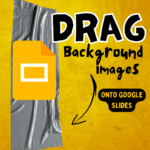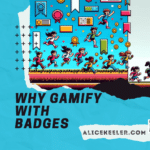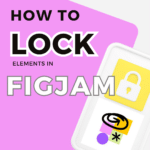My Entire Math Book Is DOK 1
I taught High School math for 14 years. In looking back at the curriculum my district used, it was almost entirely DOK 1 and a little DOK 2. In other words, low critical thinking. In response to “when am I ever going to use this” we would assure students we were teaching them critical thinking. We were not. DOK 1 is low critical thinking. Evidence that it was DOK 1 was that I was able to type up pretty much all the book work, district worksheets, quizzes and tests into quia.com. The math problems were hard for the students, but certainly not complex. (Check out Robert Kaplinksy’s blog for more on DOK and complexity).
Rational Expressions
I was looking at rational expressions. Here is an example:

A simple Google Search and I have a plethora of websites with step by step directions as well as video tutorials. In 2017, if I think my job is to show kids how to work out DOK 1 math problems, I’ve been replaced by Google and YouTube.
This university website has some step by step solutions for rational expressions. Follow the 3 steps… and it proceeds to show that you follow directions and are able to do any of the example problems in these 3 steps. Following directions is DOK 1.

So why are we asking students to do math problems like this? I found an algebra book from 1900 and it is the exact same problems. In 2017, those who are applying math use spreadsheets, calculators and computers… and they use them to solve real problems not to just crank out math solutions. No one ever will walk up to one of our students on the street and hand them trinomials to factor and reduce. Literally computers have replaced this task. Wolfram Alpha and even just Google will give you answers to math problems just by asking.
Show Your Steps
My district curriculum was to assign pages of these types of problem. I’d even give students the answer because what I really needed was for them to “show their steps.” Show your steps is DOK 1. It’s not critical thinking, it is procedure following. Anything that is procedural can be replaced by a computer… and it has been.
mathportal.org has a rational expressions calculator (amongst other calculators). It not only allows the student to enter in those math problems from the book or worksheet, it gives the students the answer AND THE STEPS!

The phone app Photomath allows students to hold their phone over the textbook and it just spits out answers AND THE STEPS! Do not be naive, your students know about this and use it. Wolfram Alpha has a function to also solve math problems and shows the step by step solutions.
Math from 1900 is obsolete.
[tweet]Rote math problems and show your steps have been replaced by technology.[/tweet] In every industry, when technology comes along, it is disruptive and they have to adapt or die. Procedural work in many industries is replaced by robots. Even Uber has self-driving cars come pick you up. If your dream is to be a taxi driver, you’re out of luck. We are not going to have mass unemployment due to technology. It is just the jobs people will have will be DIFFERENT.
- Students need to be creative thinkers. Show your steps is not creative thinking.
- Students need to be critical thinkers. Show your steps is not critical thinking.
- Students need to be collaborators. Students do not need to work together to follow steps.
- Students need to be able to clearly communicate their ideas. Showing steps is not the same as showing thinking.
Analyze Over Memorize
Embrace it. Technology has taken the boring rote part of math off our plate. Now we get to do more interesting stuff. Ask students to analyze the math. Instead of graphing a bunch of parabolas (DOK 1), use Desmos to investigate parabolas. Have the students draw conclusions and discuss what they find.
In this lesson activity, students use Google Cardboard (a great hook into learning) to view the St. Louis Arch. A picture of the St. Louis arch is then dropped into Desmos. Desmos creates sliders for the students to investigate what the coefficients of the quadratic formula do to the graph. They use the sliders to fit the parabola to the picture. Students are working in small groups where each student has the same picture but off center. Students should get the same equation for the St. Louis Arch, but they do not. Why? Analyze. Discuss.
Embrace Technology, Do Not Fight It
Is it cheating to use tools you have access to 24/7 in the every day world? I say no. If technology has replaced a type of question you ask or an activity you do with students, we change the question. Instead of “do this math problem” have students use PhotoMath on 2 problems and compare and contrast the solutions. (Thank you to Diana Herrington for this suggestion.)
How do we
- Take advantage of the technology to push kids to higher critical thinking levels?
- Use tech to extend and apply their learning?
- Use tech to allow for richer discussions since students now are not spending all their time computing?
- Make it relevant?
- Bring in real data for students to apply math to?
- Value the students constructing strategies over coming up with the right answer?
Spreadsheets
A great place to start with technology and math: Spreadsheets. Spreadsheets are an essential life skill yet it often gets overlooked as a skill in school. Here is a little activity for students to use spreadsheets with rational expressions. It is still DOK 1 but has some elements I like in a lesson. The students get to choose the numbers rather than being told. It expects that students can figure things out (They can!!! Need some love and support to overcome the learned helplessness). Provides web resources with examples rather than the teacher spending their time on DOK 1 directions.
Robert Kaplinksy
Robert Kaplinsky is my go to guy for increasing DOK (Critical Thinking) in math. He has a whole collection of lesson plans freely available to you that are NOT DOK 1.

What I love about these lessons is they do not start with a rote math problem that kids do not care about. Instead, he asks an interesting hook such as “How can we #savenelly?” Where students look at a real news article about the rap star Nelly and figure out how to apply operations on decimals to address the question.

To increase the critical thinking, start by asking an interesting question that is open ended. As Jo Boaler says in her book Mathematical Mindsets to provide students with math problems that have a low floor and high ceiling. That means rather than a single answer, students can approach the problem at a basic level or take it further.
In the problems on Robert Kaplinsky’s website consider having students identify the guiding questions. Start by having students do the thinking rather than us doing the thinking for them. Then help provide feedback to help develop their critical thinking skills. To me, this is the true value of a teacher. Not in being able to write down things that can be obtained off the Internet; but rather in building relationships with students, designing high quality lessons, providing feedback that develops their thinking, helping students to understand rather than to just follow procedural steps, and to make real connections whenever possible.
Dan Meyer
Dan Meyer (blog.mrmeyer.com) has his 3 Act Math lessons linked from his blog. He says “My pedagogical mission lately is to help students develop a question before answering it and to create a headache before offering them aspirin.”
Notice the shift here, rather than giving students a question, Dan Meyer says to
Help students develop a question.
John Stevens
John Stevens has a blog about how he loves worksheets. I enjoyed the click-bait title but more importantly he has some awesome points.
“How much room am I providing the student to explain her reasoning?”
A subtile poke at the worksheet. Are we asking students for answer or to explain their reasoning? BIG DIFFERENCE.
“More problems do not elicit more knowledge; they elicit more compliance.”
Less is more. Go deeper. More thinking not more problems.
“Any good worksheet must have an opportunity for the student to reflect on what he has learned.”
Look at the research. Reflection is an essential part of the learning process. Oftentimes this gets omitted. Do something, get a grade. That makes it perceived as busywork.
Math Conversations
Rather than how can kids write out math problems, I look for how we can have conversations about math instead. Google Slides is one of the perfect venues for this. Start small and try having students work out math problems on quarter sheets of paper. You can not give meaningful feedback on a stack of math problems for students, and you do not need to. Have students choose 3 problems. Not 3 problems to turn in, but rather 3 problems they want feedback on! Students use the webcam to insert a picture of the 3 problems they chose onto Google Slides. The inserting comments feature allows you to shift away from comments to having conversations. Students can REPLY to Google comments. Keep the conversation going until the student actually gets it. Learning is it’s own reward and when students have a chance to get feedback and have a learning conversation with you, they will love math.

Corbin Boughen
Corbin created a Google Slides that allow the students to go through the ideas without him waiting for students to copy. He gets to use his time differently. Time spent talking WITH students is much more valuable than time spent talking AT students. Trust that students CAN follow directions, expect them to. They CAN explore ideas and discuss math. They CAN access information independently. What is great about having the students do this activity on Google Slides is the opportunity for collaboration with students and the ability to insert feedback conversations.
Teaching Math with Google Apps
Diana Herrington and I just finished the book “Teaching Math with Google Apps” and it should be out in the next few months. If you would like to be notified when it is released (or to sign up for our infrequent newsletter) please fill out this Google Form.
Math Workshops
Diana and I have several “Teaching Math with Google Apps” workshops coming up. We also have a workshop this summer on using technology to teach math. If you are new to using G Suite and Google Apps, check out my “G Suite for Math Teachers” workshops that we have.
We are always adding more workshops, dates and locations.









4 thoughts on “My Entire Math Book Is DOK 1”
Thank you so much for writing this article! I never realized how outdated math problems could be in a textbook. My students would probably be thrilled reading this article, because they often ask, “Why do I have to write this out when a calculator could solve it quicker?” I’ve responded with various answers including the words thinking, understanding, and problem solving. After reading this article I realize they really weren’t using many of those skills. Your statement, “It’s not critical thinking, it is procedure following,” made me question how I am using DOK in my classroom. I’ve asked students to explain problems, but how much are they taking away from it? The resources you provided are extremely helpful. I plan on incorporating their ideas as soon as possible! Great ideas about embracing technology. Do you have any suggestions on how to differentiate higher levels of DOK or help all students if they’re struggling to apply ideas?
First place to start with DOK really is Robert Kaplinsky. It’s so hard to teach differently than you were taught, you have the first step! Recognizing that we need to. Take a look at Kaplinsky’s charts of types of math problems and really make your brain sweat. He has sample problems also at openmiddle.com that are good to look at. One of my favorite phrases is “Analyze, not memorize.” Have students compare and contrast solutions that were already created by, for example, wolframalpha.com. Have students consider “what if this happens…” Ask more open ended questions. Students should have to determine what information they need and then either make an assumption or find the information. For example, I have a question “How long do you have to exercise on an exercise bike to work off eating a brownie.” Okay… well, how big is the brownie (kid has to ask that)? Kid makes a DECISION. How many calories are in a brownie… need to look that up.
This example seems to be a misunderstanding/misapplication of DOK. It seems to be using DOK as a linear model in order to assess individual student growth.
Thoughts?
To be DOK 1-student got one of the 2 problems wrong on the half sheet or student got both problems correct on the Baseline half sheet, but missed #1 OR #3 on the DOK 2 and 3 paper.
To be DOK 2- student must have #1 and #3 or #5 correct
To be DOK 3-Student must have gotten #1,3, and #5 correct, plus #2 OR #4
To be considered for DOK 4-Problems #1-5 on the DOK 2 and 3 sheet all need to be correct.
To be DOK 4- They must have all problems correct
Not at all. DOK is about the complexity of the thinking not how many problems they got right.